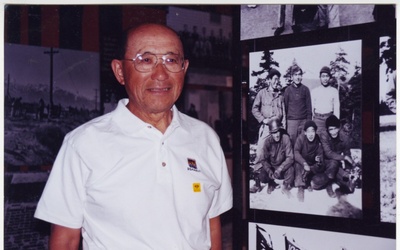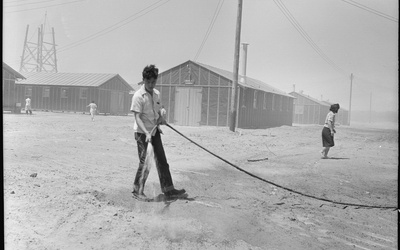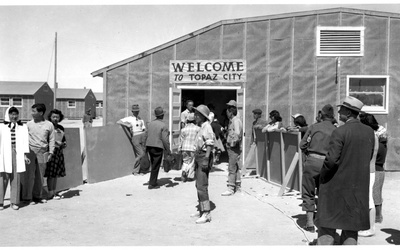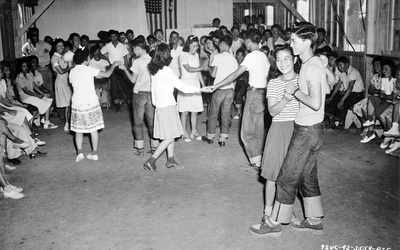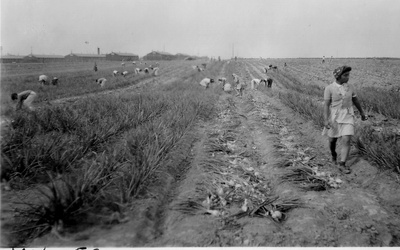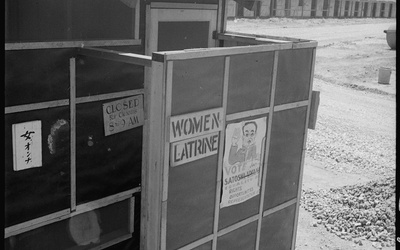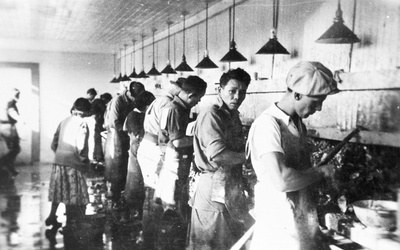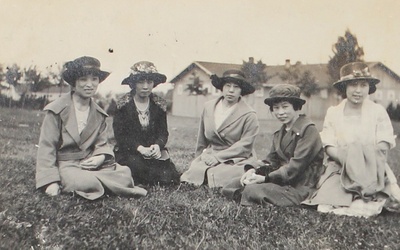
Denshō
@denshoDenshō: The Japanese American Legacy Project, located in Seattle WA, is Discover Nikkei Participating Organization since February 2004. Its mission is to preserve the personal testimonies of Japanese Americans who were unjustly incarcerated during World War II, before their memories are extinguished. These irreplaceable firsthand accounts, coupled with historical images, related interviews, and teacher resources, are provided on the Denshō website to explore principles of democracy and to promote tolerance and equal justice for all.
Updated November 2006
Stories from This Author
A Tribute to Fred Shiosaki's Remarkable Legacy
May 6, 2021 • Denshō
Fred Shiosaki was a remarkable man who led a remarkable life. We are deeply saddened to learn that he recently passed away — but incredibly grateful for the legacy he left behind and his generosity in sharing his story with us and so many others. We offer this tribute in honor of Fred’s memory and in celebration of his life. Fred Akira Shiosaki was born on August 23, 1924, in the Spokane area community of Hillyard, Washington. The fourth of …
Ten Things That Made Poston Concentration Camp Unique
Feb. 7, 2020 • Brian Niiya , Denshō
The Colorado River “Relocation Center”—more commonly referred to as Poston—was located in the Arizona desert a few miles from the California border. The largest and most populous of the War Relocation Authority (WRA) administered concentration camps (with the exception of post-segregation Tule Lake) with a peak population of nearly 18,000, Poston was unique among WRA camps in a number of ways. First, it was built on the Colorado River Indian Reservation and jointly managed by the Office of Indian Affairs …
Ten Little Known Stories About Topaz Concentration Camp - Part 2
Oct. 31, 2019 • Brian Niiya , Denshō
Read Part 1 >> HOSTILE RECEPTION FOR OUTSIDE FARM WORKERS As at many camps, inmates were encouraged to go out on short term leave during the harvest season to do agricultural work in states like Utah, Idaho, and Colorado. Because so many workers were moving to the coast to take relatively well-paying war industry jobs, there were serious shortages of agricultural workers, leading to many farmers attempting to recruit incarcerated Japanese Americans. Thousands of Japanese Americans did do this, particularly …
Ten Little Known Stories About Topaz Concentration Camp - Part 1
Oct. 30, 2019 • Brian Niiya , Denshō
The “Central Utah Relocation Center”—more popularly known as Topaz—was located at a dusty site in the Sevier Desert and had one of the most urban and most homogeneous populations of the camps, with nearly its entire inmate population coming from the San Francisco Bay Area. Topaz is perhaps best known as the site of the fatal shooting of an inmate by an overzealous camp sentry in April 1943 and for its art school, which included a faculty roster of notable …
Thieving Guards, Mass Food Poisoning, and Other Facts of Life in Fresno Assembly Center
Sept. 20, 2019 • Brian Niiya , Denshō
The Fresno Assembly Center* (FAC) opened on May 6, 1942 and held a total of 5,344 Japanese Americans forcibly removed from the Fresno and Sacramento areas. One of fifteen dedicated short-term detention camps opened in the spring of 1942, the facility closed six months later when the population was transferred to a more permanent prison camp in Arkansas. Though surrounded by barbed wire fences and guarded by military police—all the while facing oppressive heat in a nearly shadeless camp and …
10 Little Known Facts of Life at Minidoka
Sept. 2, 2019 • Brian Niiya , Denshō
Located in Southern Idaho, Minidoka concentration camp opened on August 10, 1942 and held some 13,000 Japanese Americans during World War II. The incarcerees — most of whom hailed from Washington and Oregon — were accustomed to relatively mild climates and struggled to adapt to Minidoka’s extreme temperatures and relentless dust storms. They also endured lesser-known travails. Read on for untold stories of life at Minidoka. 1. “A Source of Unpleasantness and Inconvenience” Due to a parts shortage, the …
10 Little-Known Stories About Rohwer Concentration Camp
May 27, 2019 • Brian Niiya , Denshō
If there’s one true thing about studying history, it’s that there’s always more to learn. Less (in)famous than sites like Manzanar and Tule Lake, Rohwer was one of two WRA concentration camps located in Arkansas, where inmates were exposed to the unique climate and racial politics of the South, and had regular interactions with Nisei soldiers training at nearby military facilities. This year’s Rohwer Pilgrimage took place on April 11, and Densho Content Director Brian Niiya collected ten little-known facts …
What An Ungodly Place To Meet: Tales From Camp Toilets
June 22, 2018 • Brian Niiya , Denshō
In stories of the forced removal and incarceration, certain types of stories recur. There is the shock of Pearl Harbor and the subsequent exclusion orders, the preparations for removal including human “vultures” who come by to buy household goods for a fraction of their value, and Issei women who break dishes rather then sell them at such prices. Once at the concentration camp, there is dust, extreme temperatures, barbed wire fences and guard towers, spartan living conditions (sometimes in converted …
Ship Jumpers, Border Crossers, and Other "Illegal" Issei Immigrants
Jan. 12, 2018 • Brian Niiya , Denshō
Here at Densho, we often draw parallels between the forced removal and subsequent incarceration of Japanese Americans from the West Coast and the treatment of marginalized groups today. Sadly, the need to do this has only increased in recent months. However the current crackdown on and scapegoating of immigrants—particularly those deemed “illegal”—should remind us about an earlier period of Japanese American history: that of the Issei pioneers who came to the U.S. over one hundred years ago and laid the …
4 Bad Ass Issei Women You've Probably Never Heard of
May 22, 2017 • Nina Nobuko Wallace , Denshō
If you’re into strong women who like to color outside the lines and aren’t afraid to take what’s theirs, then you came to the right place, my friend. Keep reading for a herstory lesson on some little-known Issei trailblazers who were slaying stereotypes, undermining the patriarchy, and proving immigrants #MakeAmericaGreatAgain since before you were born. Get ready, ’cause it’s about to get hot in here. 1. YONA TSUDA ABIKO Born into a former samurai family in 1880, Yonako Tsuda arrived …

